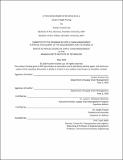A Time Series Model for the China-to-U.S. Ocean Freight Pricing
Author(s)
Cao, Yuchen Yvonne
Downloadscm2020-cao-a-time-series-model-for-china-to-us-ocean-freight-pricing.pdf (1.592Mb)
Metadata
Show full item recordAbstract
Ocean freight forwarding on the China-to-U.S. lane is a key service that C.H. Robinson, the sponsoring company, offers to the firm’s international clients. The rates on that lane have experienced volatility in the past few years which led to uncertainties to the future pricing trend. A statistically predictive model that forecasts the future pricing trend can help to resolve this challenge. This capstone studies two approaches: a time series forecasting model, and a time series forecasting model with exogenous factors. These models are used to build a predictive model to forecast the future ocean freight rate. Economic indicators are selected as the independent variables in this research. After comparing 14 time series models including Autoregressive Integrated Moving Average (ARIMA) and Exponential Smoothing model, the results show that a Multiplicative Seasonality (with no trend) Exponential Smoothing Model provides the best-fit forecasting metric. We also discovered that the best-fit model is less sensitive to error when the analysis assigns more weight to the most recent observation and the error rate increases rapidly right after the model experiences a sharp drop in the historical data rates. Some economic indicators show a correlation with the historical ocean freight rates; however, they do not improve the accuracy of the model with or without lags in the period. Therefore, we concluded that a multiplicative seasonality (with no trend) exponential smoothing model can best predict the future pricing of the China-to-U.S. ocean freight rates.
Date issued
2020-08-06Keywords
transportation